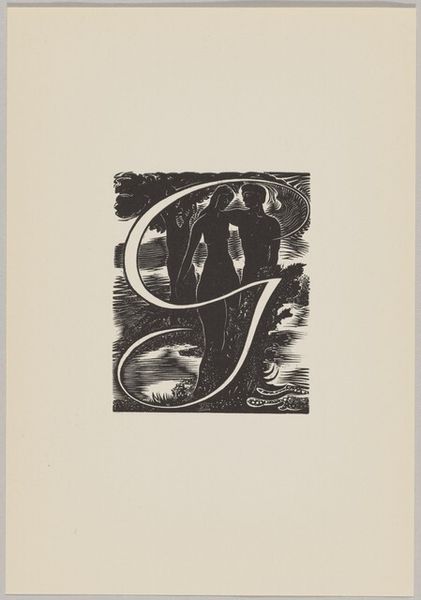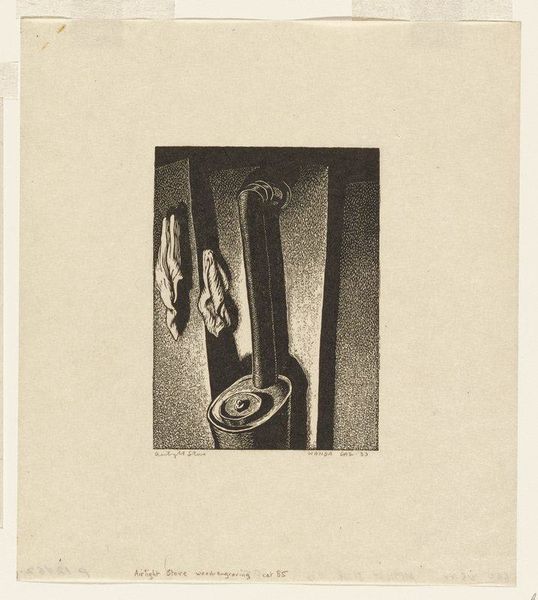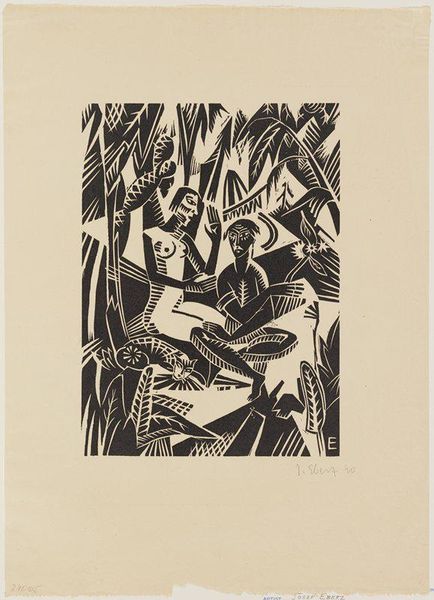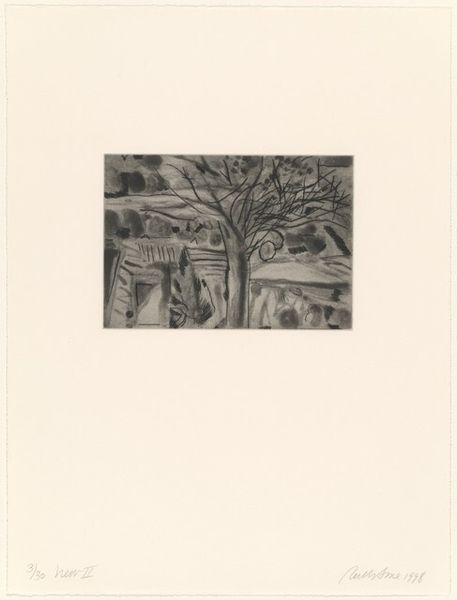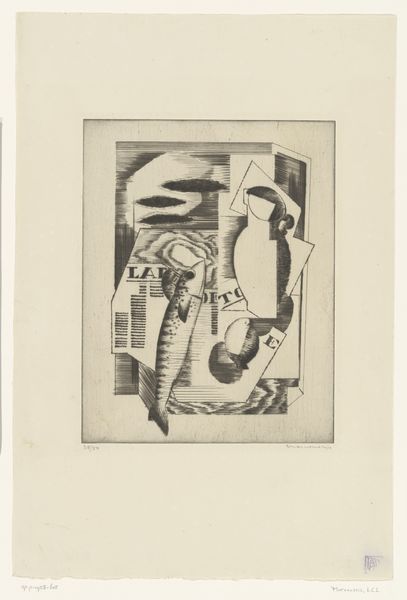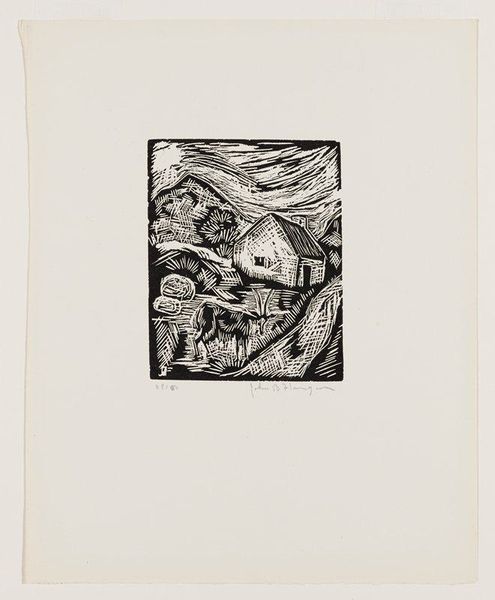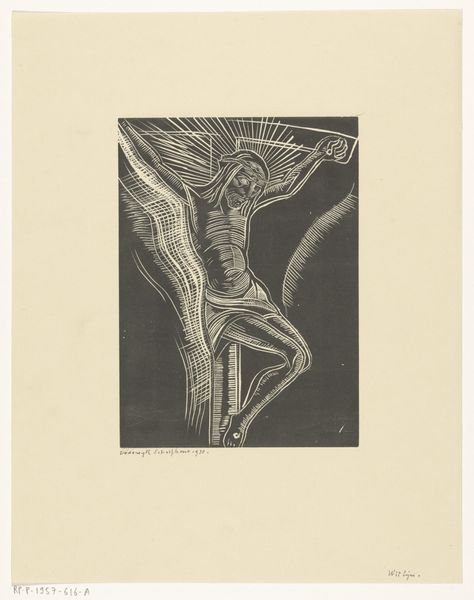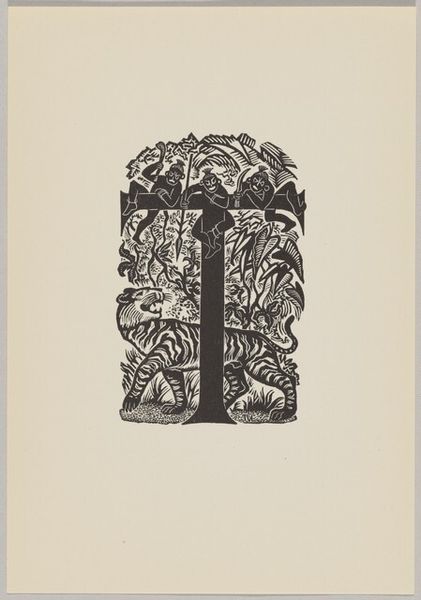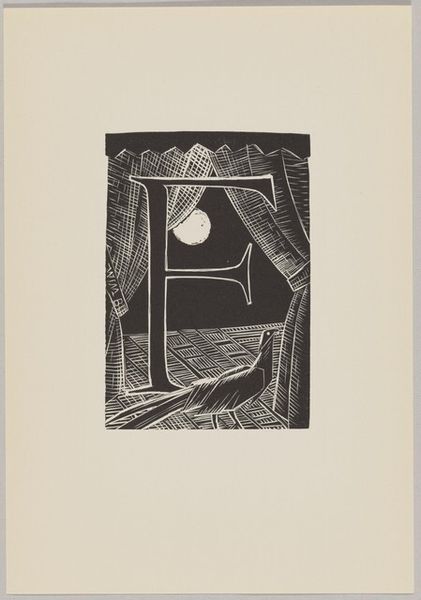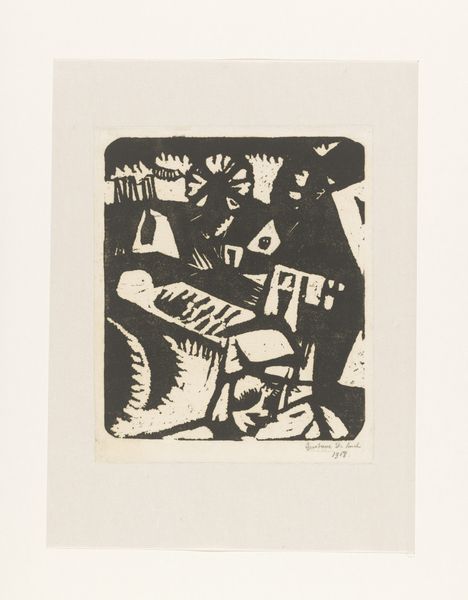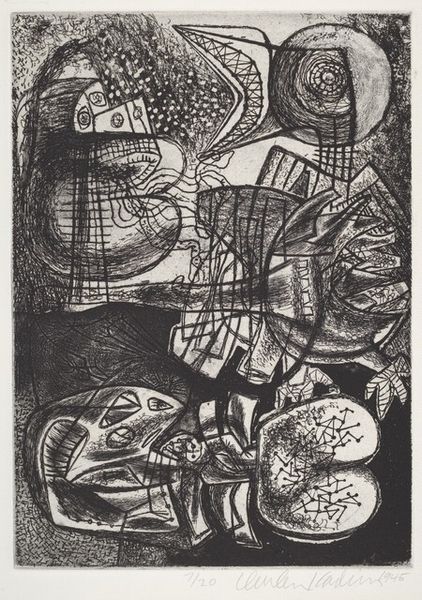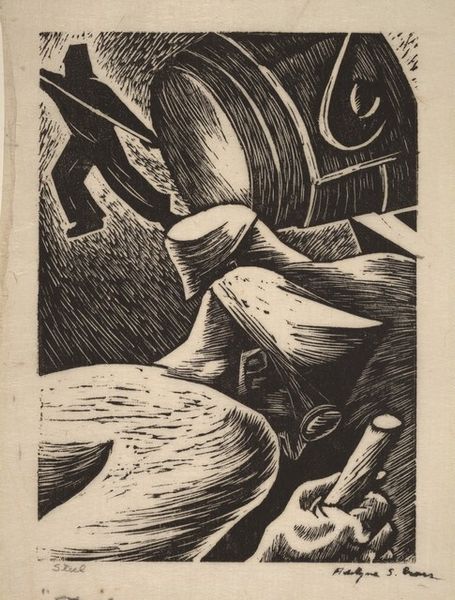
graphic-art, print, woodcut
#
graphic-art
# print
#
geometric
#
woodcut
#
abstraction
#
line
#
musical-instrument
Dimensions: image: 10.2 x 7.7 cm (4 x 3 1/16 in.) sheet: 19.9 x 13.9 cm (7 13/16 x 5 1/2 in.)
Copyright: National Gallery of Art: CC0 1.0
Curator: Standing before us is "Letter 'Q'", a woodcut print possibly created in 1953 by Ru van Rossem. What strikes you about it? Editor: It's arresting. Stark, almost severe in its contrasts, but there's a musicality implied too. It’s very dynamic; not at all what you expect when you see it reduced to just lines. Curator: Absolutely. That interplay between severity and implied melody is intriguing. Look closely—van Rossem uses stark lines to render a cello, fragmented and reassembled into an abstract composition. Editor: And figures, too! Faint, stylized figures playing other instruments are hinted at in the background. There is also a disembodied hand holding the cello. The linework creates the mood as much as the image does. Curator: Exactly. Those background figures add layers of context, suggesting performance and participation, placing the artwork within a social setting, where music is collaboratively produced. The symbolic language here draws heavily on geometric forms that resonate across cultures, almost like a visual Esperanto, pointing to broader movements of post-war abstract art. Editor: Given the cultural moment, the early 1950s, does the starkness also reflect the socio-political climate of the Cold War era, a time of division and uncertainty, even in supposedly neutral spaces of artistic expression? Curator: That's a vital question. I believe abstraction was sometimes employed as a way of speaking about societal unease indirectly, without risking censorship. What does the initial ‘Q’ perhaps conceal? A question, perhaps? Editor: Intriguing idea. I can't shake the feeling that Van Rossem cleverly encodes something within this ostensibly simple composition, an understated rebellion, that history has made the image an enigma for us. Curator: Or maybe a visual riddle where form embodies music and evokes universal human experience, transcending temporal limitations? Editor: That, too, holds a powerful resonance. This woodcut, stark as it seems on first glance, conceals an entire concert.
Comments
No comments
Be the first to comment and join the conversation on the ultimate creative platform.
